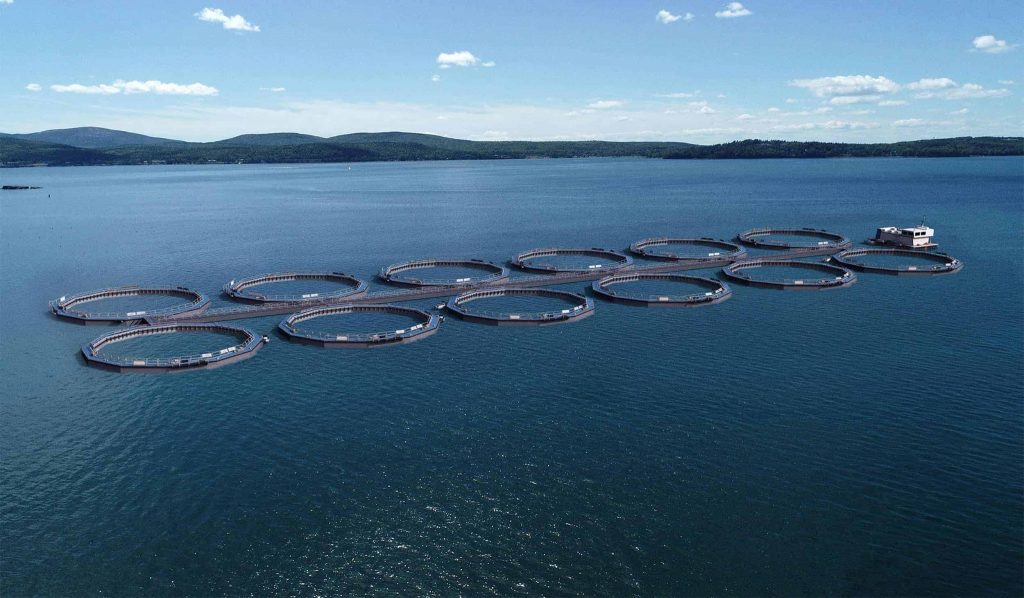
Designing ways: American Aquafarms tackle toughest challenges in sea farming
August 11, 2021
By
Liza Mayer
 (Photo: American Aquafarms)
(Photo: American Aquafarms) The innovative design of American Aquafarms will wrestle down some of the toughest challenges facing sea farming.
The semi-closed pen structure tackles sea lice. A floating ring of rigid aluminum holds a circular sack made of a high-strength polymer, which extends in a cone to a depth of 36 metres. The pen’s water supply is drawn from below, where fewer sea lice exist.
Water flow via four pipes in different positions creates a circular current and refreshes the sack every 80 minutes. Seasonally, the intake can be adjusted to different depths to help control the water temperature inside the pen, providing a more stable environment for the fish. Because the pen is closed, oxygen must be continuously added, but this gives operators more control.
Prolonged high temperatures and low oxygen have caused mass mortalities in open fish pens in the recent past.
The closed membrane is designed to withstand 28 tons of force per square metre. Such strength protects against breaks by predators and related fish escapes. A secondary nylon net inside the polymer membrane adds redundancy.
Biofouling, the cause of a 2017 open net pen collapse in Washington State, will be addressed by a robot that moves around the cage rim with a submerged brushing system. It scrubs the net inside and out from top to bottom, 24/7. A remotely-operated vehicle will clean the outside of the pens and the mooring systems periodically.
All of this occurs under the watchful eye of the land-based control facility, where operators will control feeding, regulate oxygen, inspect pens, and monitor fish behaviour. The system can collect about 90 perc ent of fish waste, a major environmental concern. It is pumped to a central main line connected to the barge.
There, a sludge treatment system developed by Blue Ocean Technology will use recycled heat to dry it down to 45 per cent “virtually odourless” solids. This process cuts energy costs and carbon emissions, while making it easier to transport sludge back to the land-based facility. American Aquafarms will soon decide which byproducts to pursue, such as production of biogas or pyrolysis oil.
Advertisement
- Idaho hosts this year’s in-person NWFCC conference
- Cermaq pledges to cut 35% of greenhouse gas emissions by 2030





